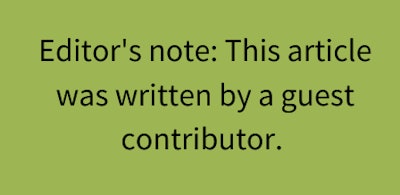 Photo: Pictures of Money/Flickr
Photo: Pictures of Money/FlickrFinding ways to cut costs can be a good way to maintain profitability, even when times are uncertain. While insurance is necessary for businesses, there are a few ways that business owners can lower their insurance expenses without giving up the coverage they need. Let’s look at an overview of how insurance companies calculate an insurance premium, empowering you to make well-informed decisions in order to lower your insurance-related expenses.

Insurance premiums, for any type of insurance coverage, are based on a specific rate assigned by the insurance company. These specific rates are assigned to each class of business based on the likelihood and severity of a loss happening within the scope of business operations.
For example, a landscaper using motorized equipment with sharp blades has a higher likelihood of an employee getting seriously injured than a desk clerk working at an accountant’s office. The landscaper will be assigned a higher rate on his worker’s compensation insurance than the attorney. The assigned rate is then multiplied by the “basis” (which is typically total sales or total payroll) as a way to gauge the premium needed by the insurance company to cover the potential losses.
At first thought, you may be thinking the only way to lower your insurance premium is to trade in your lawnmower for a calculator, but that is not the case. These calculations operate similarly to a pay per minute cellphone plan. Therefore, if you use fewer minutes (or are forced to because of economic conditions) your cellphone bill will decrease. The same is true with insurance.
Worker’s compensation
Worker’s compensation insurance is meant to cover employees who get hurt or injured during the scope of work. The insurance company uses a business’s payroll as the basis to calculate the needed premium. For the insurance company to charge an accurate premium, they need to know the total payroll for each type of work being done. Therefore, the higher your payroll expense, the higher your worker’s compensation insurance.
In times like these when your workload decreases for an extended period of time, unfortunately, it typically means that your payroll is also decreasing. As a business owner, you have the ability to work with your insurance agent, updating your policy to accurately represent the aforementioned circumstances. By lowering your payroll on your policy, it will automatically lower the total premium by the same percentage.
For example, if you lowered your payroll from $100,000 to $75,000 (because you had to furlough or lay off workers), your yearly worker’s compensation insurance premium is going to be lowered by 25 percent also. As detailed below, but worth mentioning, any numeric value reported should be an accurate representation of your business. It may be tempting to lower your reported payroll for immediate relief; however, you will be held financially responsible for inaccurate numbers in a lump sum balance when audited.
General liability
General liability is third party coverage, meaning that it is meant to payout to a third party if your business is liable for a loss. For example, if your employee is on the zero-turn mower and shoots a rock through the client’s window, your general liability policy will pay to replace the window. Insurance companies most often use total sales as the basis for the needed premium. Not to sound like a broken record, but if for some reason your sales are dropping enough to impact your yearly revenue, lowering that reported sales number can help bring your premium down. As with worker’s compensation, the percentage decrease in total sales will be mirrored in your yearly premium percentage decrease.
A few things to keep in mind
I know this seems too good to be true, so I wanted to give you a few things to watch out for if you’re thinking about using these techniques to save money.
- The savings aren’t all upfront. If you pay your premium in full every year, then adjusting your revenue and payroll numbers will result in a returned premium all at once, giving you a nice influx of needed cash during these rough economic times. However, if you’re like most businesses I work with, then you probably pay monthly. With this being the case, your savings will be prorated throughout the rest of your policy period. This indicates that the savings will be spread out over your remaining payments. In this case, your immediate in-pocket savings will be allocated in smaller payments each month rather than a large lump sum.
- Audits. Worker’s compensation and general liability lines have audits. At the end of your policy period, the insurance company reviews your books, confirming if the payroll and revenue figures you initially reported were accurate. If they were, then no problem. If they were not accurate, you will owe the lump sum to the insurance company at the time of the audit. These lines of insurance are truly “pay for what you use.” So, as long as you are accurate in your numbers, you should be fine. If you do decide to lower these numbers because of the current situation, just remember to raise them again when things return to business as usual.
- Premium amount. Unfortunately, the businesses that this will help the most (in terms of numeric savings) are the larger landscapers who pay higher premiums. The lower your premiums, the lower amount of savings you are going to get from knocking your revenue down 25 percent. Either way, it will give you some relief, which may be much needed.
This was a simple explanation of a couple of things you can do to help lower your expenses during this uncertain economic environment. With that being said, there are a few extra steps that need to be done to put this strategy into practice, but your agent should be able to help you with those steps.
EDITOR’S NOTE: This article was written by Will Allen, principal at Allen Insurance Group, located outside of Dallas, Texas. Allen specializes in risk strategies for the green industry. He has developed specialized industry programs for his clients and is constantly looking for innovative ways to help his clients reduce their insurance expenses while strengthening their risk program. If you have questions you can reach out to him at [email protected].









